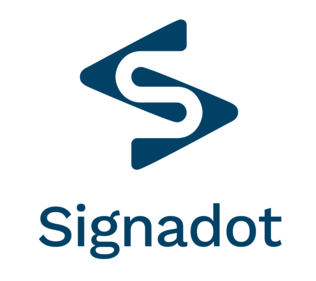
Company: Lightfleet Corporation
Website: www.lightfleet.com
Headquarters: Camas, Wash.
Year Founded: 2003
Employees: 22
Company Description: “Lightfleet’s optical fabric is a breakthrough to multiprocessor computing that overcomes the performance bottlenecks of typical interconnect architectures.”
By Joh n Peers, CEO
n Peers, CEO
Imagine for a moment that firms on Wall Street can execute trades and trading algorithms much faster, where trading even milliseconds faster can mean millions in profits; or that the military can put high-density analytics systems like facial recognition in command aircrafts to speed intelligence, decision support and response efforts; or that today’s leading Internet service providers and search engines can dramatically accelerate services while cutting power and cooling costs in half and minimizing server footprints in over-crowded data centers.
Enabling these types of strategic advantages and business opportunities is what drives our team at Lightfleet, and today this vision is closer than ever to reality.
Lightfleet was founded in 2003 by a team of scientists and engineers seeking to deliver simplified solutions in the increasingly complex world of computing. Drawing from diverse backgrounds in optics, signal processing, neural computing, massively parallel processing, and semiconductor design, Lightfleet invented a new approach for inter-node communication that enables significant TCO advantages through rapid application throughput on lower cost platforms, lower power consumption and higher CPU utilization rates.
Representing a major paradigm shift in multiprocessor computing, Lightfleet’s system utilizes a patented communications model that uses broadcast light and mirrors to enable a simultaneous all-to-all interconnect, virtually eliminating the need for cables and switches within the cluster. The Lightfleet Direct Broadcast Optical Interconnect (DBOI) speeds the flow of data between nodes such as multiple processors inside a server, thus eliminating any bottlenecks that today’s switches and other interconnects introduce due to their hierarchical structure. The Lightfleet DBOI enables the use of a single send-to-all protocol which results in the applications seeing increased communication performance between nodes. Nodes can communicate to all other interested nodes at the same time, something impossible to do in a point-to-point switched interconnect. The result is increased communication speed, more reliability, lower operational costs, lower capital costs, lower cooling costs, and lower electrical power costs.
Unlike fiber optics that contain the light and essentially use photons as a substitute for electrons in a wire, the DBOI is a free space optical interconnect that utilizes the unique properties of photons. By taking advantage of the unique, non-interfering properties of light, the DBOI creates a switchless optical fabric. This patented technology offers a direct broadcast API that allows nodes to effectively communicate in a Shared Memory Processing (SMP)-like fashion with all other interested nodes simultaneously. As a result, we are able to achieve messaging throughput and application performance previously available only on much more expensive large-scale SMP systems.
DBOI also eliminates cabling complexity, so it has significantly better reliability (Bit Error Rate or BER), even under maximum loads. Communication through broadcast light is fundamentally different than point-to-point technologies jostling for use of a data path. Multiple broadcast light communications spatially pass through each other without interference, much like flashlight beams crossing through each another. This is true non-blocking communication, something that cable-based communication has been unsuccessfully trying to emulate for decades.
By leveraging the properties of light, Lightfleet brings enhanced value to our customers and partners in the form of efficient, flexible, and affordable systems to meet a range of compute needs including transaction processing, data mining, visualization, simulation, and high-throughput, large-scale application processing.
This technical advantage will optimize data center efficiency and cloud computing, delivering significantly faster application performance with reduced data center footprint, power and cooling costs. Additionally, it will open up new high-growth opportunities for OEMs and application developers.
The market is taking note of these opportunities. The recent deployment of our first commercial alpha unit at Microsoft Research’s eXtreme Computing Group is a significant milestone, not only for Lightfleet but also for the industry as it looks at new opportunities for massively parallel, distributed computing. The eXtreme Computing Group is exploring the potential of Lightfleet’s optical interconnect in cloud computing workloads and we look forward to working with Microsoft to develop next-generation server and data center architectures.
Also of note, Lightfleet was named as a Prime Contractor for a government contract awarded in July 2009, a designation rarely accorded an early-stage company and directly attributable to the unmatched performance of Lightfleet’s DBOI technology.
We are now ramping up manufacturing and continue to garner interest from government and financial services industries, including brokerage and investment management firms, market data firms and exchanges.
With the server market heating up, spurred in part by cloud computing trends, the drive toward data center efficiency and a recent surge in chip innovations, Lightfleet’s solution is poised to be a market disrupter as it enables new levels of performance and efficiency for both exascale data centers and mainstream enterprises.
Lightfleet – www.lightfleet.com









